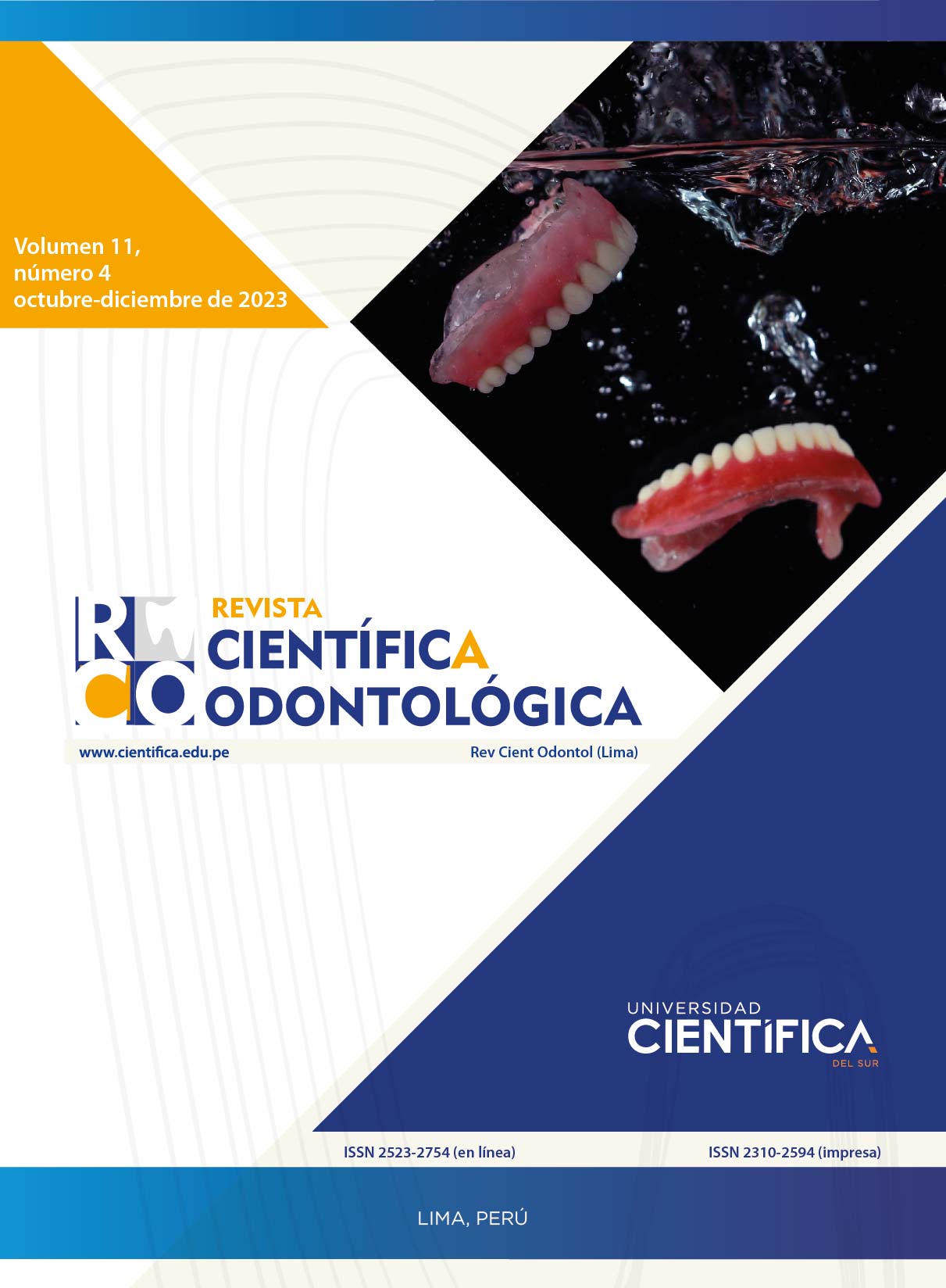Effectiveness of an irrigant in the chronic periapical abscess management: a case report
DOI:
https://doi.org/10.21142/2523-2754-1104-2023-180Keywords:
dental pulp, apical injury, periapical abscess, root canal irrigators, sodium hypochloriteAbstract
The endodontic environment has optimal conditions for the growth of microorganisms that can release by-products into the periapical region of the tooth and cause inflammatory lesions. Chemical disinfection using irritants solutions plays an clinical important role, as they are able to remove waste from contaminated organic and inorganic tissues, generating a residual antibacterial effect. The purpose of this study was to show the effectiveness of 2.5% and 5.25% sodium hypochlorite as an irrigating agent for the clinical management of a chronic periapical abscess in a tooth with apical resorption. Initially, 2.5% sodium hypochlorite was used, however, as it did not have an optimal abscess healing response after 3 days, it was decided to use a concentration of 5.25% to achieve a better bactericidal effect. After 5 days, the fistula healed, and endodontic treatment continued. One of the perspectives of this case report is to investigate more about the use of antibiotic therapy in conjunction with a good irrigation protocol.
Downloads
Downloads
Published
Issue
Section
License

This work is licensed under a Creative Commons Attribution 4.0 International License.

Este obra está bajo una licencia de Creative Commons Reconocimiento 4.0 Internacional.












